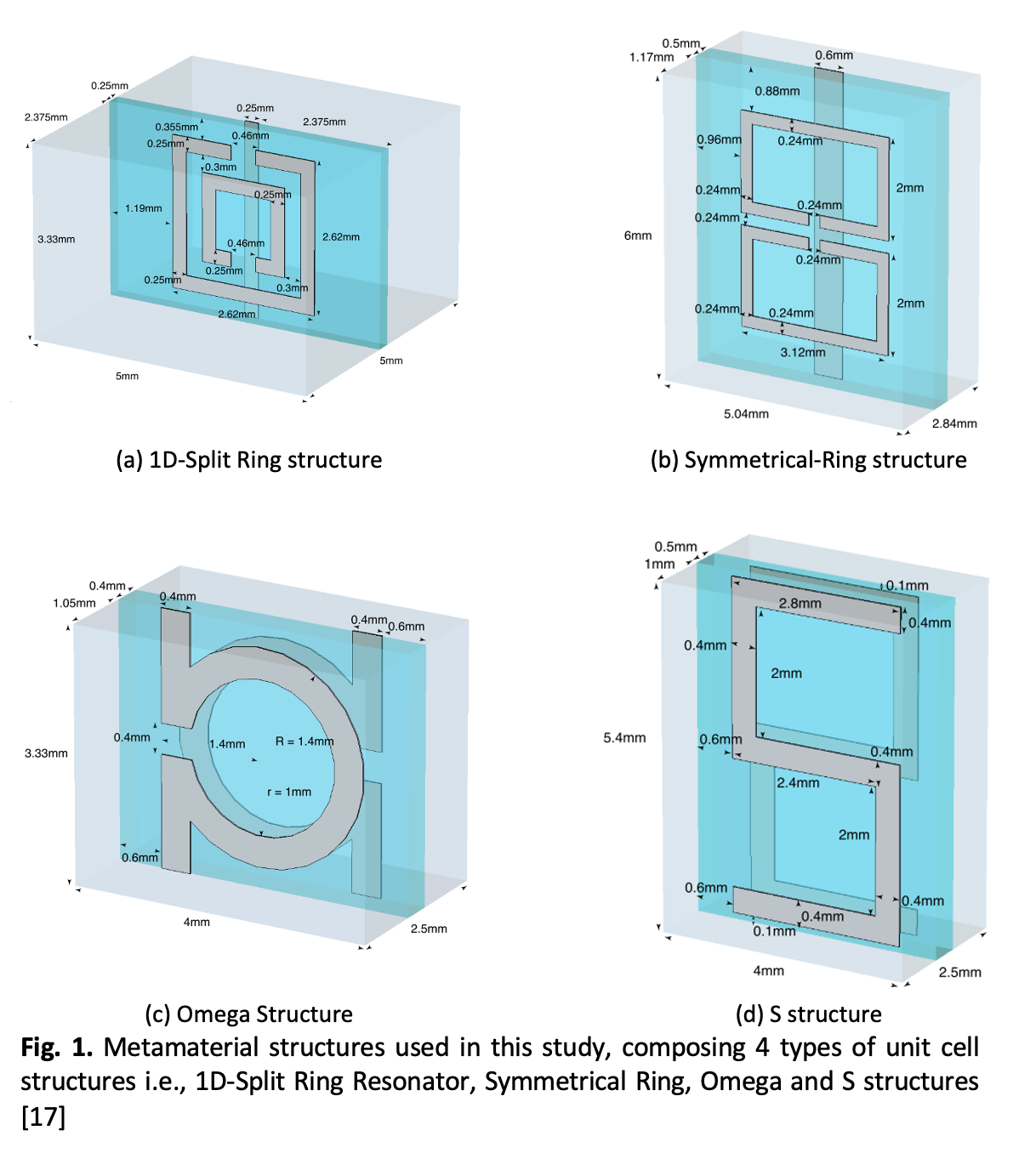Simulation of Wave Propagation in Plasma-Metamaterial Composites Based on Plasma Parameters and Metamaterial Structures
DOI:
https://doi.org/10.37934/araset.37.2.3647Keywords:
Plasma, metamaterial, antennaAbstract
Metamaterial is a left-handed medium used in antenna design to overcome the typical design's larger size and untunable nature. Because of its design with a high permittivity dielectric substrate and some deformation, the wireless sector may be able to solve this difficulty. Metamaterial antennas have a five-fold reduction in size, a higher bandwidth, a wider scanning angle, good beam performance, and electronically controlled targeting. Metamaterials antennas also improve antenna parameters such as frequency generation, gain, and bandwidth. This research aims to suggest the best metamaterials structure for improving antenna performance using plasma as a base. This study used 12 types of plasma with varying plasma frequencies and collision frequencies with four metamaterials structures: 1D-split ring structure, Symmetrical structure, Omega structure, and S structure. Computer Simulation Technology (CST) Studio Suite was used to design and simulate each structure with a sequence of plasma. At frequencies ranging from 1 GHz to 20 GHz, parameters including return loss, gain, radiation pattern, and Voltage Standing Wave Ratio (VSWR) are used to assess an antenna's performance. Due to its electromagnetic qualities, the 1D-split ring construction has a better omnidirectional figure and VSWR value of 1.0039 dB. When all criteria were considered, the best results were obtained when using a 1D-split ring structure of the Plasma 9 (plasma frequency of 3.58528 x1011 rad/s and collision frequency of 1.3349 x109 1/s) produces an efficient return loss, high gain, better VSWR and a better omnidirectional figure among the four structures evaluated.
Downloads





























